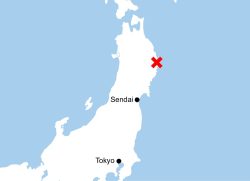Forest Environment Tax: Constantly Review Allocation of Revenue Based on Actual Situation
16:53 JST, May 31, 2024
While it is important to protect forest resources, it is essential to constantly review the system for that purpose to check whether it is appropriate for the actual situation.
The collection of the forest environment tax, which will be used to cover such expenses as forest management, will begin in June. About 62 million people, excluding those in low-income brackets, will be taxed, and it will be collected by adding ¥1,000 per year to the individual resident tax.
The annual revenue from the tax is expected to be about ¥62 billion, which will be distributed to local governments.
The central government launched the forest management and control system in fiscal 2019 with the aim of making forestry a growth industry and properly conserving forest resources. The tax will be used to finance this system.
Protecting forests, which cover two-thirds of the country’s land, will help prevent landslides and preserve water sources. It also has a role in curbing global warming.
However, there is a serious shortage of forestry workers. The forestry management and control system is aimed at vitalizing the forestry industry by allowing municipalities to consolidate underutilized privately owned forests and outsource the management of larger forest plots to operators.
The system is designed to prevent unprofitable privately owned forests from deteriorating by allowing municipalities to manage them at a minimum level at public expense, such as by thinning out the forests.
However, even though the system is now in its sixth year, it has not had a sufficient positive effect.
The number of neglected forests that go uncared-for is increasing every year due to the owners aging. It is also said to be a challenge for local governments to develop employees with knowledge of forestry.
Prior to the collection of the forest environment tax, prefectures and municipalities have been receiving subsidies from the national treasury since fiscal 2019 for the purpose of forest management. However, the method of allocating the subsidies is also problematic.
Of the ¥50 billion in total allocated in fiscal 2022, ¥10.1 billion was saved in their funds and elsewhere and was not utilized.
This is largely due to the fact that the allocation of the subsidies is determined based on population as well as forest areas and the number of forestry workers, and the subsidies are also distributed to large cities with few forests. In urban areas, it is hoped that domestic timber will be used mainly for public facilities, but there are many cases in which it is not being used.
From this fiscal year, the central government revised the system to reduce the percentage of the subsidies to be distributed according to population from 30% to 25% and increase the allocation to mountainous municipalities. However, it is necessary to continue examining from now on whether this revision alone will be sufficient.
There should be a lot of room to devise allocation methods with the right emphasis on key points, through such measures as focusing the allocation on supporting people in the forestry industry who are suffering from a lack of successors.
The forest environment tax was established by changing a portion of the special tax for reconstruction after the 2011 Great East Japan Earthquake. It is hoped that the government will consider how the tax should be effectively used in line with the new objective of forest conservation so as not to invite criticism of wasteful usage.
(From The Yomiuri Shimbun, May 31, 2024)
"Editorial & Columns" POPULAR ARTICLE
-

Artificial Intelligence Expands Possibilities for Foreign Language Learners
-

Build Intellectual, Physical Strength, As Well As Communicative Power / Japan Should Move from Beneficiary to Shaper of World Order
-

Global Economy in Turmoil: Prevent Free Trade System from Going Adrift / Risks to Financial Markets Must Be Heeded
-

Japan-China Strain Set to Persist as Beijing Officials Self-Interestedly Bash Tokyo; Takaichi Unlikely to Back Down
-

French and German Ambassadors to Japan Call for Democracies to Unite in Defense against Russian Disinformation
JN ACCESS RANKING
-

As Chinese Tourists Shun Japan, Hotels and Stores Suffer
-

Osaka-Kansai Expo’s Economic Impact Estimated at ¥3.6 Trillion, Takes Actual Visitor Numbers into Account
-

Japan Govt Adopts Measures to Curb Mega Solar Power Plant Projects Amid Environmental Concerns
-

BOJ Gov. Ueda: Highly Likely Mechanism for Rising Wages, Prices Will Be Maintained
-

Economic Security Panels Debate Supply Chains, Rare Earths; Participants Emphasize Importance of Cooperation Among Allies




















